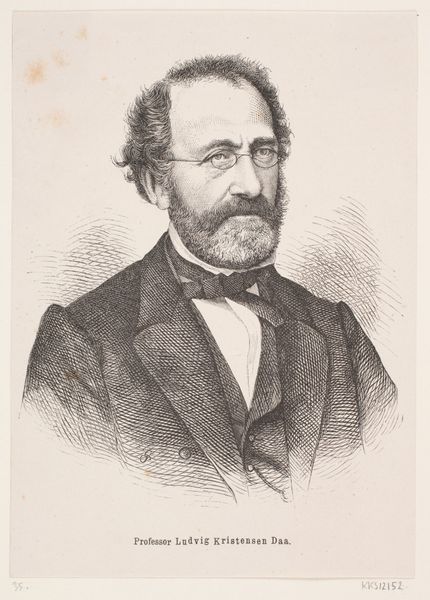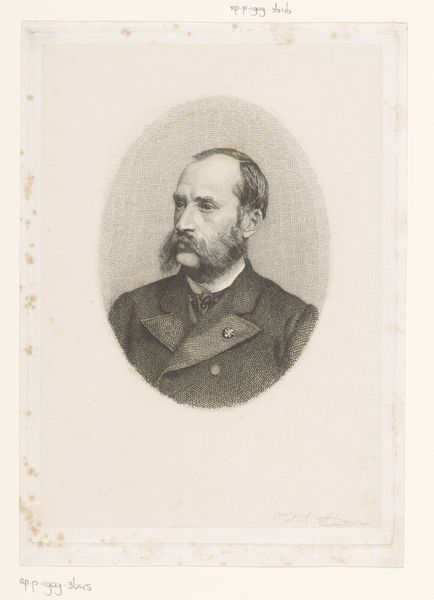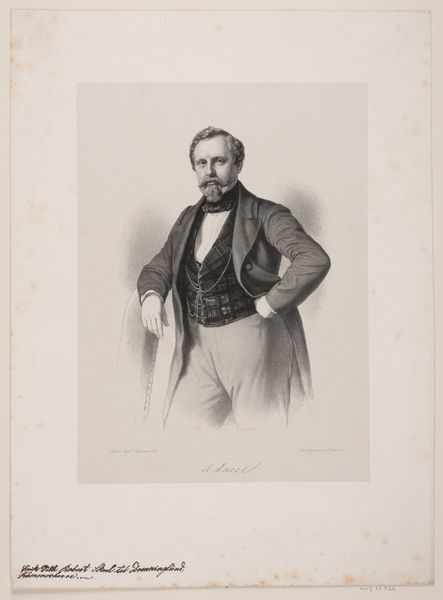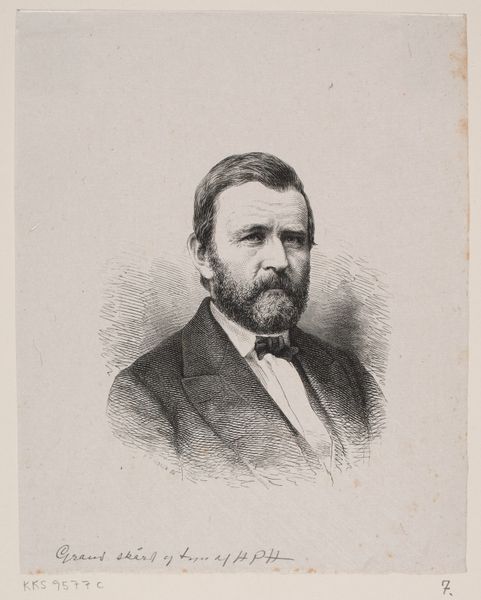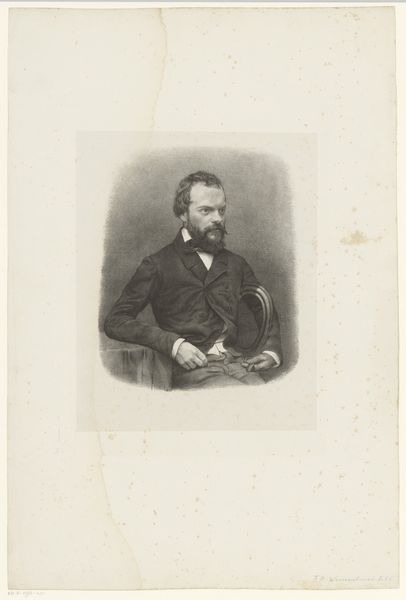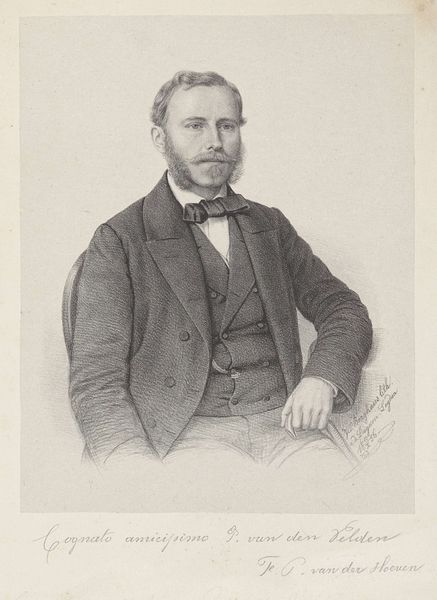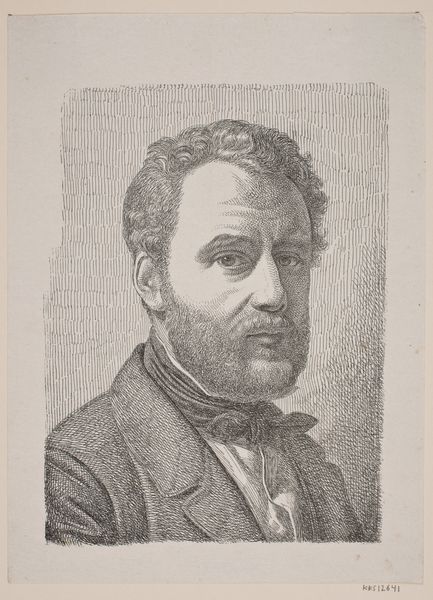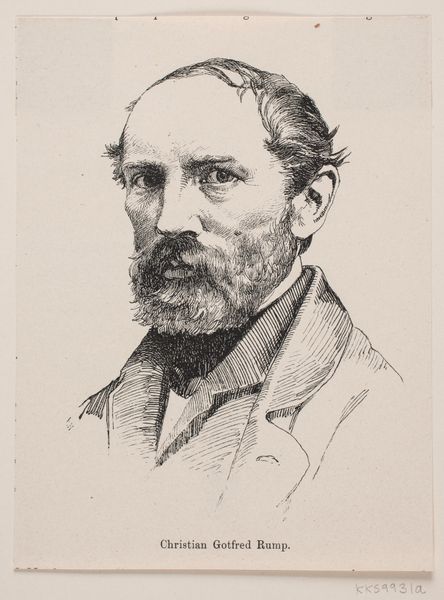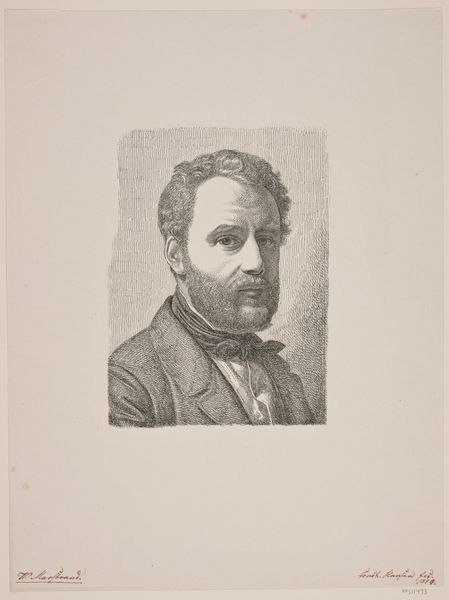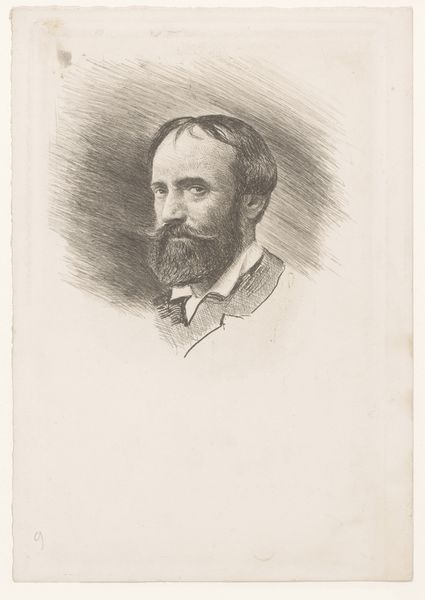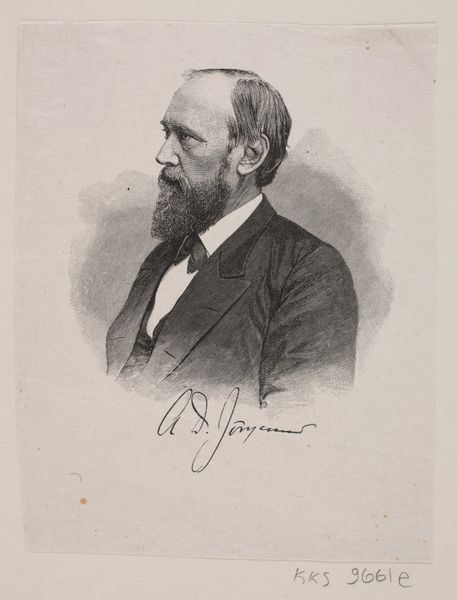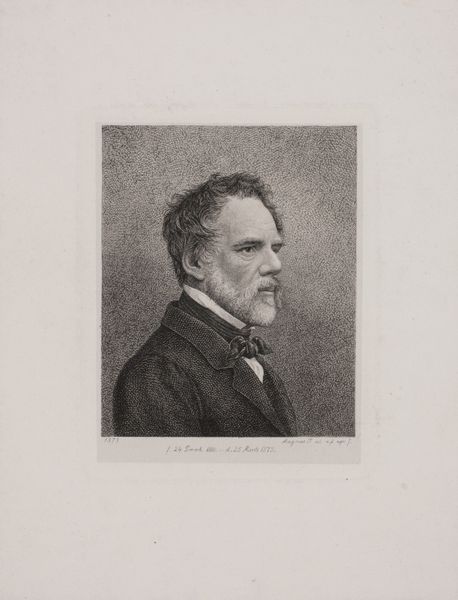
print, engraving
# print
#
portrait drawing
#
engraving
Dimensions: 163 mm (height) x 116 mm (width) (bladmaal)
Editor: So this engraving, "Vilhelm Marstrand" by Franz Wilhelm Obermann, sometime between 1830 and 1896, gives a stark, serious impression. I'm immediately struck by the detail in the rendering of his face and clothing, but also the formality of it. How do you interpret this work, especially within its historical context? Curator: This portrait, situated within 19th-century Danish society, is far more than just an image. Considering Marstrand's position as a Professor and Director, how do you see this image functioning within the power structures of the time? Think about the visual language of authority, and who has historically had the privilege of being represented in such a manner. Editor: I guess I hadn't considered the power dynamic so explicitly. The formal pose and the detailed rendering certainly suggest a desire to project authority and respectability, reflecting the subject's social standing. Curator: Exactly. Now, let's unpack that a bit further. Consider the act of creating and disseminating this print. Who was the intended audience, and what messages were they meant to receive about Marstrand and, perhaps more broadly, about the artistic and academic elite of the era? Was this about creating celebrity, or maintaining status? Editor: I hadn't really thought about it like that before, but now I see that an image like this isn't just a representation, but a statement about power and social status, especially during a time of shifting class dynamics. Thanks for bringing that to my attention! Curator: And thank you for your fresh perspective! It's precisely this kind of critical dialogue that helps us understand the layered meanings embedded within art.
Comments
No comments
Be the first to comment and join the conversation on the ultimate creative platform.
